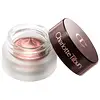Natasha Denona Mini Biba Eyeshadow Palette Versus Charlotte Tilbury Eyes To Mesmerise Cream Eyeshadow
What's inside
What's inside
 Key Ingredients
Key Ingredients

 Benefits
Benefits

 Concerns
Concerns

 Ingredients Side-by-side
Ingredients Side-by-side

Synthetic Fluorphlogopite
Zinc Stearate
Cosmetic ColorantDimethicone
EmollientTriethoxycaprylylsilane
Caprylyl Glycol
EmollientEthylhexylglycerin
Skin ConditioningHdi/Trimethylol Hexyllactone Crosspolymer
Silica
AbrasiveCI 77891
Cosmetic ColorantCI 77491
Cosmetic ColorantCI 77492
Cosmetic ColorantCI 77499
Cosmetic ColorantCI 75470
Cosmetic ColorantMica
Cosmetic ColorantCalcium Aluminum Borosilicate
Octyldodecyl Stearoyl Stearate
EmollientCaprylic/Capric Triglyceride
MaskingCetyl Dimethicone
EmollientCalcium Titanium Borosilicate
AbrasiveHydrogenated Palm Kernel Glycerides
EmollientDimethicone/Vinyl Dimethicone Crosspolymer
Skin ConditioningLauryl Dimethicone
Skin ConditioningTin Oxide
AbrasiveHydrogenated Palm Glycerides
EmollientLaureth-4
EmulsifyingCI 77000
Cosmetic ColorantCI 77163
Cosmetic ColorantCI 19140
Cosmetic ColorantSqualane
EmollientTrimethylsiloxysilicate
EmollientHydrogenated Styrene/Isoprene Copolymer
Boron Nitride
AbsorbentPentaerythrityl Tetra-Di-T-Butyl Hydroxyhydrocinnamate
AntioxidantSynthetic Fluorphlogopite, Zinc Stearate, Dimethicone, Triethoxycaprylylsilane, Caprylyl Glycol, Ethylhexylglycerin, Hdi/Trimethylol Hexyllactone Crosspolymer, Silica, CI 77891, CI 77491, CI 77492, CI 77499, CI 75470, Mica, Calcium Aluminum Borosilicate, Octyldodecyl Stearoyl Stearate, Caprylic/Capric Triglyceride, Cetyl Dimethicone, Calcium Titanium Borosilicate, Hydrogenated Palm Kernel Glycerides, Dimethicone/Vinyl Dimethicone Crosspolymer, Lauryl Dimethicone, Tin Oxide, Hydrogenated Palm Glycerides, Laureth-4, CI 77000, CI 77163, CI 19140, Squalane, Trimethylsiloxysilicate, Hydrogenated Styrene/Isoprene Copolymer, Boron Nitride, Pentaerythrityl Tetra-Di-T-Butyl Hydroxyhydrocinnamate
Cyclopentasiloxane
EmollientMica
Cosmetic ColorantWater
Skin ConditioningDiphenylsiloxy Phenyl Trimethicone
Skin ConditioningCetyl PEG/PPG-10/1 Dimethicone
EmulsifyingHdi/Trimethylol Hexyllactone Crosspolymer
Hydrogenated Palm Kernel Glycerides
EmollientSodium Chloride
MaskingDimethicone/Phenyl Vinyl Dimethicone Crosspolymer
Sorbitan Stearate
EmulsifyingDisteardimonium Hectorite
StabilisingHydrogenated Palm Glycerides
EmollientSilica Dimethyl Silylate
EmollientEthylhexylglycerin
Skin ConditioningLauryl Methacrylate/Glycol Dimethacrylate Crosspolymer
Ceresin
Emulsion StabilisingPropylene Carbonate
SolventPotassium Sorbate
PreservativePolyacrylamide
Glycerin
HumectantSodium Dehydroacetate
PreservativeDimethicone/Vinyl Dimethicone Crosspolymer
Skin ConditioningC13-14 Isoparaffin
EmollientSilica
AbrasiveLaureth-7
EmulsifyingTocopherol
AntioxidantAscorbyl Palmitate
AntioxidantPentaerythrityl Tetra-Di-T-Butyl Hydroxyhydrocinnamate
AntioxidantCI 77891
Cosmetic ColorantIron Oxides
Cyclopentasiloxane, Mica, Water, Diphenylsiloxy Phenyl Trimethicone, Cetyl PEG/PPG-10/1 Dimethicone, Hdi/Trimethylol Hexyllactone Crosspolymer, Hydrogenated Palm Kernel Glycerides, Sodium Chloride, Dimethicone/Phenyl Vinyl Dimethicone Crosspolymer, Sorbitan Stearate, Disteardimonium Hectorite, Hydrogenated Palm Glycerides, Silica Dimethyl Silylate, Ethylhexylglycerin, Lauryl Methacrylate/Glycol Dimethacrylate Crosspolymer, Ceresin, Propylene Carbonate, Potassium Sorbate, Polyacrylamide, Glycerin, Sodium Dehydroacetate, Dimethicone/Vinyl Dimethicone Crosspolymer, C13-14 Isoparaffin, Silica, Laureth-7, Tocopherol, Ascorbyl Palmitate, Pentaerythrityl Tetra-Di-T-Butyl Hydroxyhydrocinnamate, CI 77891, Iron Oxides
Ingredients Explained
These ingredients are found in both products.
Ingredients higher up in an ingredient list are typically present in a larger amount.
Ci 77891 is a white pigment from Titanium dioxide. It is naturally found in minerals such as rutile and ilmenite.
It's main function is to add a white color to cosmetics. It can also be mixed with other colors to create different shades.
Ci 77891 is commonly found in sunscreens due to its ability to block UV rays.
Learn more about CI 77891This ingredient is a silicone used to improve the texture of products and absorb oil. It does not get absorbed into the skin.
Like other silicones, Dimethicone/Vinyl Dimethicone Crosspolymer helps condition the skin by creating a barrier. In this sense, it can act as an emollient and trap moisture in.
This ingredient is a type of elastomer.
Learn more about Dimethicone/Vinyl Dimethicone CrosspolymerEthylhexylglycerin (we can't pronounce this either) is commonly used as a preservative and skin softener. It is derived from glyceryl.
You might see Ethylhexylglycerin often paired with other preservatives such as phenoxyethanol. Ethylhexylglycerin has been found to increase the effectiveness of these other preservatives.
This ingredient is a powder used to improve texture, slip, and give products a silky texture.
Hydrogenated Palm Glycerides isn't fungal acne safe.
We don't have a description for Hydrogenated Palm Kernel Glycerides yet.
Mica is a naturally occurring mineral used to add shimmer and color in cosmetics. It can also help improve the texture of a product or give it an opaque, white/silver color.
Serecite is the name for very fine but ragged grains of mica.
This ingredient is often coated with metal oxides like titanium dioxide. Trace amounts of heavy metals may be found in mica, but these metals are not harmful in our personal products.
Mica has been used since prehistoric times throughout the world. Ancient Egyptian, Indian, Greek, Roman, Aztec, and Chinese civilizations have used mica.
Learn more about MicaPentaerythrityl Tetra-Di-T-Butyl Hydroxyhydrocinnamate (long name, huh?) is a synthetic antioxidant.
It is used to help stabilize other antioxidants or prevent the color from changing in a product.
As an antioxidant, it helps fight free-radical molecules. Free-radical molecules are capable of damaging our cells and other genetic material. Thus, antioxidants may reduce the signs of aging.
This ingredient is oil-soluble.
Learn more about Pentaerythrityl Tetra-Di-T-Butyl HydroxyhydrocinnamateSilica, also known as silicon dioxide, is a naturally occurring mineral. It is used as a fine, spherical, and porous powder in cosmetics.
Though it has exfoliant properties, the function of silica varies depending on the product.
The unique structure of silica enhances the spreadability and adds smoothness, making it a great texture enhancer.
It is also used as an active carrier, emulsifier, and mattifier due to its ability to absorb excess oil.
In some products, tiny microneedles called spicules are made from silica or hydrolyzed sponge. When you rub them in, they lightly polish away dead skin layers and enhance the penetration of active ingredients.
Learn more about Silica